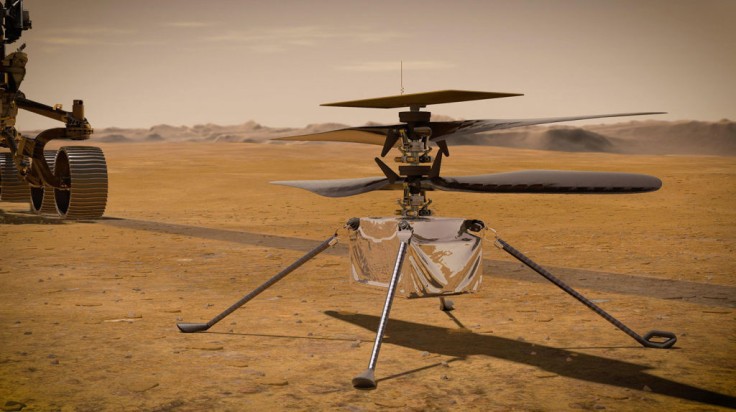Håvard Grip, Ingenuity Mars Helicopter Chief Pilot at NASA's Jet Propulsion Laboratory announced Monday that the winter conditions in Jezero Crater had an impact on NASA's Ingenuity Mars Helicopter. However, despite losing a navigational sensor, the spacecraft can still operational thanks to a software update.

How Does the Winter Condition on Mars Affect Ingenuity?
The Ingenuity was developed for a short flight-test campaign during the much warmer Martian spring, hence it is understandable that it encounters difficulties as the season has changed to winter in Jezero Crater.
According to CNET, the spacecraft was constructed to show that powered, controlled flight could be accomplished on Mars. The solar-powered chopper has now flown 28 times, but the space agency hopes that a 29th flight will take place in the near future. The question: is it possible now that the colder and shorter days are taking their toll, prompting Ingenuity to shut down overnight and expose its components to freezing temperatures?
In addition to the cold temperature, Grip also noted that the helicopter's energy budget has been hampered by increased levels of dust in the atmosphere. These factors caused the spacecraft to be unable to keep itself warm during the Martian nights, "letting its internal temperature drop to about minus 112 degrees Fahrenheit (minus 80 degrees Celsius) and letting the onboard electronics reset."
However, Grip noted that these temperature extremes between day and night tend to produce strains that can lead to component failure.
Read More : China's Shenzhou-14 Mission Has Launched With the Goal of Expanding the Tiangong Space Station
A Sensor Was Discovered To Be Broken
The Ingenuity crew noticed the helicopter's inclinometer, a navigation sensor, had ceased working during recent preparations for another flight.
According to NASA, the inclinometer is made up of two accelerometers whose sole purpose is to monitor gravity prior to spin-up and takeoff; the direction of gravity sensed is utilized to identify how Ingenuity is positioned in relation to the downhill direction.
Fortunately, another sensor can be used to monitor the altitude of the helicopter as a substitute to the inclinometer. Grip explained that the IMU has accelerometers, which can be used to estimate the initial attitude, just like the accelerometers in the inclinometer. But it has its own disadvantages. Because the IMU is not designed to sense static orientation, its initial attitude estimates will be less accurate.
Nonetheless, the Ingenuity team "believe an IMU-based initial attitude estimate will allow us to take off safely and thus provides an acceptable fallback that will allow Ingenuity to resume flying."
"Anticipating that this situation could potentially arise, we prepared the required software patch prior to last year's arrival on Mars and kept it on the shelf for this eventuality. We are therefore able to move quickly with the update, and the process of uplinking it to Ingenuity is already underway," Grip added.
It was worth noting that before IMU can be used as a substitute to the inclinometer, it first requires a patch to Ingenuity's flight software.
CNET reported that the patch could take a few days to install and test, but NASA hopes the chopper will take to the skies of Mars "in the near future" for flight no. 29, which will keep it in contact with Perseverance as the rover investigates an intriguing delta region.









